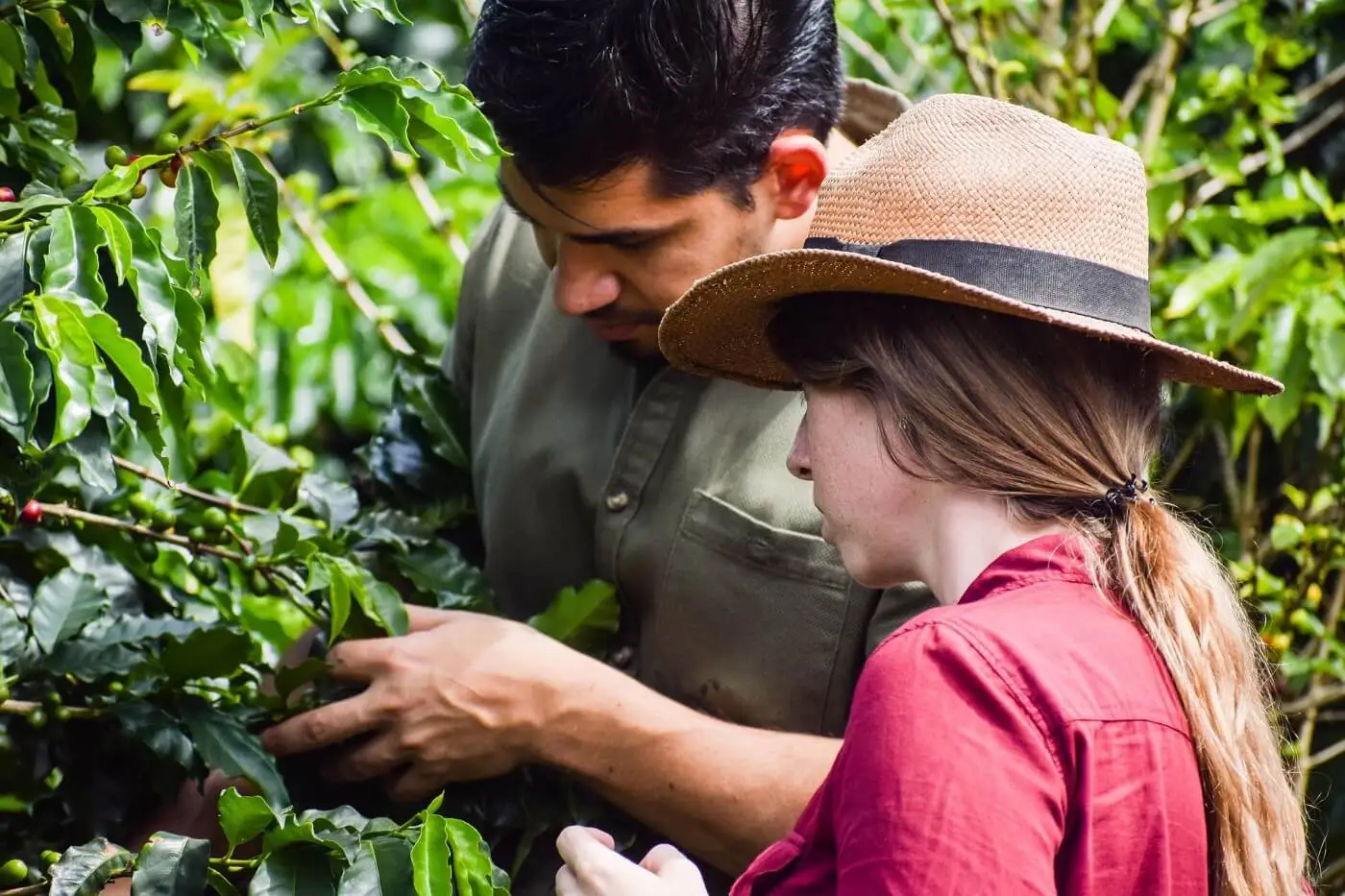For those of you that are new here, this section is where we tell the stories of the impacts of extreme weather, exacerbated by climate change. This week, we’re talking about how climate change is causing problems in agriculture, and how new plant varieties could be part of the solution.
Climate change creates adverse conditions for growing crops in many geographic areas, such as higher temperatures, more extreme weather events, and increased pest prevalence. Facing this difficult situation, farmers have essentially three choices to take action: move from the locations they’ve traditionally grown in, switch crops, or breed towards better tolerance of future climate.
Increasingly, the best option is to adapt to the future climate by breeding more resilient coffee plants.
Take coffee. It’s a unique crop because it can only be grown in the tropics. The most popular type of coffee, the arabica variety, thrives at temperatures between 64° and 70°F, on shaded mountainside farms ranging from 1,800 to 6,300 feet above sea level — basically a sliver of global arable land.

Image source: Wikimedia
But nearly half of the land around the world where high-quality coffee currently grows could be unproductive by 2050, according to a study in the journal Climatic Change. Heat-sensitive coffee production would suffer in a hotter world where heat reaches higher latitudes and altitudes. Brazil and Vietnam are most at-risk.
How? Rising global temperatures cause coffee trees to produce fewer fruits (which contain the beans). And it’s not just productivity — climate change also threatens the yield and flavor of the plant. Hotter weather also leads to the spread of diseases like coffee leaf rust, the most economically damaging disease affecting coffee. In addition, the length of the growing season is also shorter, which means that coffee beans ripen more quickly, not allowing the complex acids and sugars to develop that give coffee its rich taste.
Essentially, your morning could look — and taste — completely different within the next decade.
So plant breeders are developing new varieties of coffee that are more resilient, can produce a better harvest, and contain quality flavors. It’s no easy task — there are only a few dozen commercial varieties of coffee, which means there isn’t much genetic diversity in the crop already. That makes it hard to identify genes with desired traits.
Nonprofits like the Centre for Research into Coffee Rusts and World Coffee Research are using techniques like cross-breeding to work on new varieties. Some of it’s slow-going, because seed breeding already generally takes from about 10–15 years, and coffee trees take even longer than that to mature.
Luckily, the Centre for Research into Coffee Rusts has also identified and been testing a Colombian variety with a wide spectrum of resistance to strains of rust. World Coffee Research says it’s already developed more than 53 promising new varieties.

Coffee rust.
World Coffee Research is also using technology to tackle this massive global challenge. It has enrolled farmers into trials to incentivize sustainable practices. It pays to use certain beds to test new varieties and agronomy treatments, and tests them against other beds where farmers use their existing varieties and practices. The group uses this data to help other farmers understand their best options in a changing climate while prioritizing farmer profitability.
Have any more questions about global weather events, their impact, and how they’re linked to climate change? Send them to media@climate.ai — we will choose one to answer in the next newsletter.
